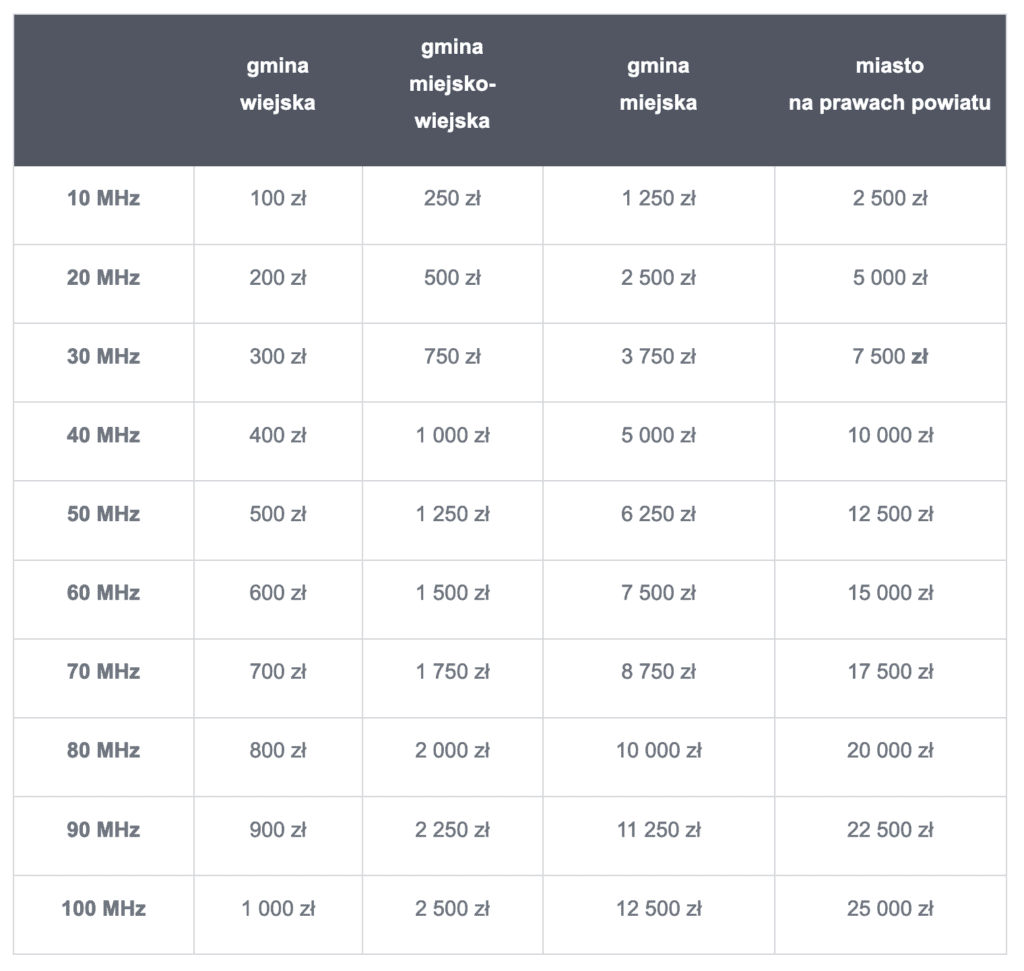The Polish authorities has launched the 3800-4200 MHz (3.8-4.2 GHz) frequency band to cities and enterprises for personal LTE and 5G community deployments. The Workplace of Digital Communications (UKE) has allotted the 3800-3900 MHz band to be used by native governments completely, which may apply for the complete 100 MHz provision. Enterprises and “different entities” can licence as much as 100 MHz at 3900-4200 MHz.
Native authorities in Poland is organised at three tiers, throughout 16 areas, 314 counties, and a couple of,478 municipalities. Native authorities can now apply for spectrum in 10 MHz blocks, as much as 100 MHz. They’re restricted to native licences in a most of 20 municipalities if they’re providing public 5G providers.
The restrict doesn’t apply if they’re registering spectrum for personal providers, to be used by municipal providers and native enterprises (“for their very own wants”); in these circumstances they’ll take 3800-3900 MHz licences in as many jurisdictions as they need. A one-time charge of PLN 1,939 (zloty; €418 / $444) applies for public community licences; a one-time charge of PLN 82 (€18 / $19) applies for personal community deployments. Annual licence charges are paid on high of the ‘stamp obligation’ prices.
These are set at: PLN 100 (€22 / $23) per 10 MHz block for ‘rural group’ (gmina wiejska) deployments (as much as PLN 1,000 for the complete 100 MHz); PLN 250 (€54 / $57) per 10 MHz block for urban-rural group (gmina miejsko-wiejska) deployments (as much as PLN 2,500); PLN 1,250 (€270 / $286) per 10 MHz block for city group deployments (as much as PLN 12,500); and PLN 2,500 (€539 / $572) per 10 MHz block for metropolis / district deployments (as much as PLN 25,000). It’s unclear how these municipal charges sq. with enterprise charges.
Permits can be issued on a first-come / first-served foundation, mentioned UKE; licences will solely cowl use of low or medium energy LTE/5G base stations – granted, respectively, to assist any variety of stations in a radius of as much as 50 metres or to cowl a single station. Mid-power outside radios stations aren’t allowed within the 4000-4200 MHz vary so as to shield utilization of radio altimeters in aviation above 4200 MHz.

Non-public networks are sometimes indicated as these whose improvement can be accelerated because of the 5G know-how, which – because of low delays within the radio half and edge computing – are predisposed to functions in non-public networks, and particularly assist industrial automation, metropolis metering, and native logistics . On the identical time, they permit for extra environment friendly administration of machines and might make the lives of native communities simpler.
UKE is granting native check licences, as properly, for a interval of as much as a yr. The regulation was revealed on September 15. The brand new UKE administration plan is out there right here (in Polish); commentary from Paweł Deoniziak, in control of the radio division at UKE, is out there right here (additionally in Polish).
Deoniziak commented: “Non-public networks are usually slated to be used with 5G know-how, which – because of low latency within the radio half, and edge computing – are predisposed to… assist industrial automation, metropolis metering, and native logistics. On the identical time, they permit for extra environment friendly administration of machines and might make the lives of native communities simpler.”
